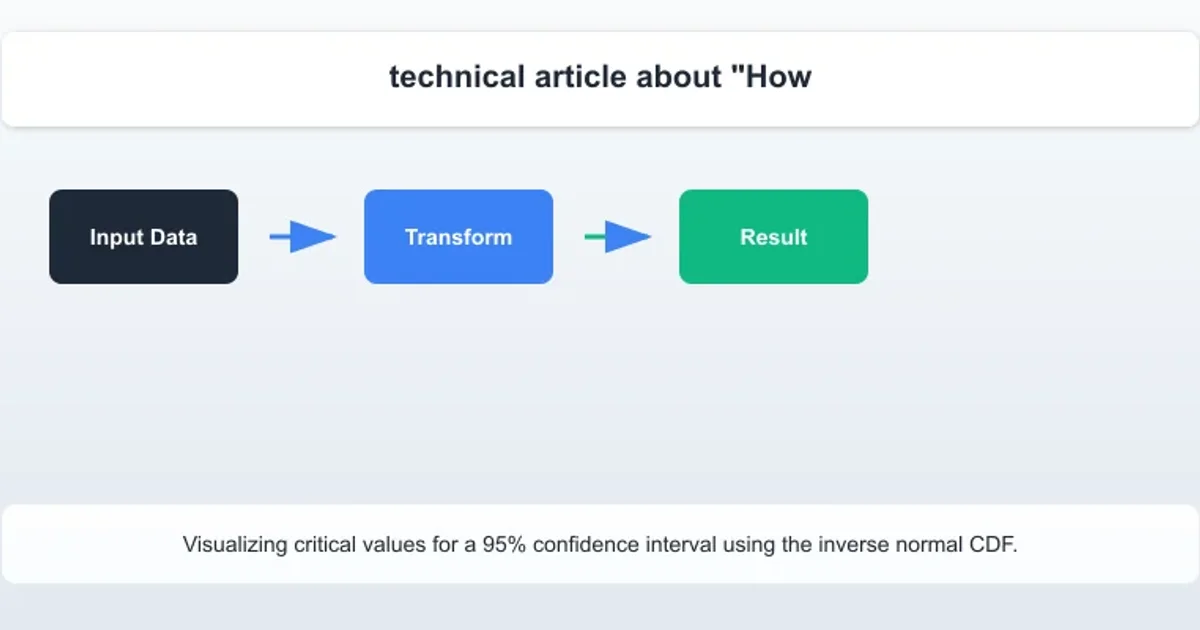Math.Tan() near -Pi/2 wrong in .NET, right in Java?
Categories:
Floating-Point Precision: Math.Tan() Discrepancies in .NET vs. Java

Explore the subtle differences in Math.Tan() behavior near singularities between .NET and Java, and understand the underlying reasons related to floating-point arithmetic and library implementations.
Floating-point arithmetic is notoriously tricky, especially when dealing with transcendental functions near their singularities. A common point of confusion arises when comparing the behavior of mathematical functions across different programming languages or platforms. This article delves into a specific case: the Math.Tan() function in .NET and Java, particularly when evaluated near -π/2.
The Tangent Function and its Singularities
The tangent function, tan(x), is defined as sin(x) / cos(x). It has vertical asymptotes (singularities) where cos(x) is zero, which occurs at x = (n + 1/2)π for any integer n. Near these points, the function's value approaches positive or negative infinity. For example, as x approaches -π/2 from the positive side, tan(x) approaches +∞, and as x approaches -π/2 from the negative side, tan(x) approaches -∞.
graph TD
A[Input x near -π/2] --> B{Calculate cos(x)}
B --> C{Is cos(x) ~ 0?}
C -->|Yes| D[tan(x) approaches ±∞]
C -->|No| E[tan(x) = sin(x) / cos(x)]
D --> F[Floating-point representation issues]
E --> G[Standard calculation]
F --> H["Different results in .NET vs. Java"]
G --> HFlowchart illustrating the calculation of tan(x) and potential issues near singularities.
Observed Discrepancy: .NET vs. Java
Consider evaluating Math.Tan(-π/2) or a value very close to it. Due to the finite precision of floating-point numbers (typically IEEE 754 double-precision), π/2 cannot be represented exactly. Therefore, any input x that is mathematically -π/2 will be represented as a slightly perturbed value, x'. The sign and magnitude of this perturbation can significantly affect the result of tan(x') near the singularity.
Historically, .NET's Math.Tan() implementation has been observed to produce results that might seem 'wrong' or unexpected compared to Java's Math.tan() for inputs extremely close to -π/2. This isn't necessarily an error in either implementation, but rather a consequence of different underlying math libraries, compiler optimizations, or even subtle differences in how π is defined or how intermediate calculations are performed.
using System;
public class DotNetTan
{
public static void Main(string[] args)
{
double piOver2 = Math.PI / 2.0;
double negPiOver2 = -piOver2;
// A value slightly greater than -pi/2 (approaching from positive side)
double val1 = negPiOver2 + double.Epsilon * 1000;
// A value slightly less than -pi/2 (approaching from negative side)
double val2 = negPiOver2 - double.Epsilon * 1000;
Console.WriteLine($"Math.PI / 2: {piOver2:R}");
Console.WriteLine($"-Math.PI / 2: {negPiOver2:R}");
Console.WriteLine($"tan({val1:R}) in .NET: {Math.Tan(val1):R}");
Console.WriteLine($"tan({val2:R}) in .NET: {Math.Tan(val2):R}");
Console.WriteLine($"tan(-Math.PI / 2) in .NET: {Math.Tan(negPiOver2):R}");
}
}
C# code demonstrating Math.Tan() behavior near -π/2.
public class JavaTan {
public static void main(String[] args) {
double piOver2 = Math.PI / 2.0;
double negPiOver2 = -piOver2;
// A value slightly greater than -pi/2 (approaching from positive side)
double val1 = negPiOver2 + Double.MIN_NORMAL * 1000;
// A value slightly less than -pi/2 (approaching from negative side)
double val2 = negPiOver2 - Double.MIN_NORMAL * 1000;
System.out.println("Math.PI / 2: " + String.format("%a", piOver2));
System.out.println("-Math.PI / 2: " + String.format("%a", negPiOver2));
System.out.println("tan(" + String.format("%a", val1) + ") in Java: " + String.format("%a", Math.tan(val1)));
System.out.println("tan(" + String.format("%a", val2) + ") in Java: " + String.format("%a", Math.tan(val2)));
System.out.println("tan(-Math.PI / 2) in Java: " + String.format("%a", Math.tan(negPiOver2)));
}
}
Java code demonstrating Math.tan() behavior near -π/2.
"R" format specifier in C# for round-trip, or String.format("%a", ...) in Java for hexadecimal representation) to reveal subtle differences in the underlying binary values.Root Causes of Discrepancies
The differences observed can stem from several factors:
Math.PIPrecision: While bothMath.PIin Java andMath.PIin .NET represent the closestdoubleapproximation toπ, the exact binary representation might differ slightly due to how they are compiled or defined in their respective standard libraries.- Underlying Math Libraries: Both platforms typically rely on highly optimized native math libraries (e.g.,
libmon Unix-like systems, or Intel's MKL). These libraries might use different algorithms or approximations for transcendental functions, especially for edge cases or inputs near singularities. - Compiler Optimizations: Compilers can reorder or optimize floating-point operations, which, while generally improving performance, can lead to slightly different results due to the non-associativity of floating-point arithmetic.
- Argument Reduction: Trigonometric functions often employ 'argument reduction' to map the input
xto a smaller, canonical range (e.g.,[-π, π]). The precision of this reduction step is critical, as small errors can be magnified near singularities. - IEEE 754 Compliance: While both adhere to IEEE 754, the standard allows for some flexibility in the implementation of transcendental functions, particularly regarding accuracy guarantees for specific inputs.

Magnification of floating-point errors near a tangent singularity.
Implications and Best Practices
For most practical applications, these minute differences are negligible. However, in scientific computing, simulations, or cryptographic contexts where exact reproducibility or extreme precision is paramount, such discrepancies can be problematic. When dealing with inputs near singularities of trigonometric functions:
- Avoid Exact Singularities: If possible, design your algorithms to avoid evaluating
tan(x)precisely atx = (n + 1/2)π. - Tolerance Checks: Implement checks for inputs very close to singularities and handle them explicitly (e.g., return
Double.POSITIVE_INFINITYorDouble.NEGATIVE_INFINITYbased on the sign of the offset). - Understand Platform Behavior: If cross-platform consistency is critical, thoroughly test and understand the behavior of mathematical functions on each target platform.
- Use Specialized Libraries: For applications requiring higher precision or guaranteed reproducibility, consider using arbitrary-precision arithmetic libraries (e.g.,
BigDecimalin Java, or third-party libraries in .NET) or specialized math libraries that offer stricter guarantees.